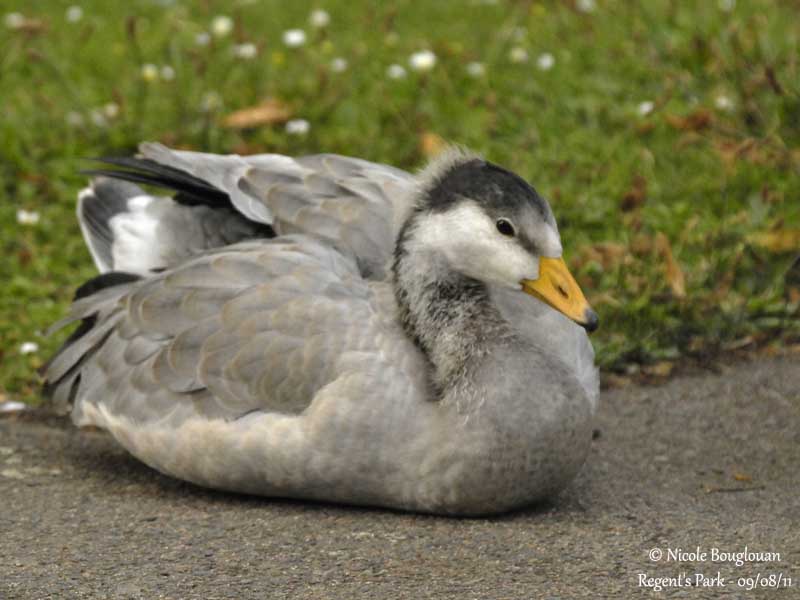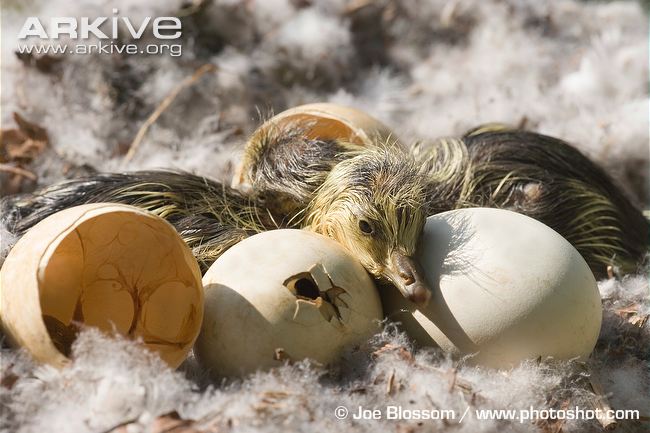Reproduction
The
breeding season for the Bar-Headed Goose typically starts in late May or
June (Cucinello, 2013).These geese usually form monogamous pairs that last
for many years. However, in years when there is an overabundance of females,
the birds will form harem groups (Lamprecht,
1987). These harem groups will have one
male and anywhere from two to five females (Arkive, 2003-2013). In these
groups there is one primary female and the remaining females are secondary
females. The primary female is the bird that the male is most attentive to.
Because of this, the primary female on average has a higher reproductive
success rate (Lamprecht,
1987). The geese will usually go to the
same nesting site every year. They usually build their nest on the ground
near a source of water such as rivers, marshes or lakes but they will
sometimes nest in trees (Arkive, 2003-2013).
On average the females
lay between three and eight
eggs. The incubation period for the eggs lasts between 27 and 30 days.
After the goslings hatch, both parents care for them and protect them from
predators, which could be one of the reasons monogamous pairs are favored
(Cucinello, 2013). The goslings are able to feed themselves and can leave
the nest one to two days after hatching. They are capable of flying after 53 days. The birds are considered juveniles until they are around
three years old. The juveniles look very similar to the adult birds except
they are more pale in color and have not yet developed the black bars on
their heads. They finally reach sexual maturity and are able to reproduce at
three years old (Arkive, 2003-2013). Some
birds that reproduce similarly are the
American White Pelican and the
Red-Tailed Hawk.
after 53 days. The birds are considered juveniles until they are around
three years old. The juveniles look very similar to the adult birds except
they are more pale in color and have not yet developed the black bars on
their heads. They finally reach sexual maturity and are able to reproduce at
three years old (Arkive, 2003-2013). Some
birds that reproduce similarly are the
American White Pelican and the
Red-Tailed Hawk.
Continue to
Interactions to find what these birds do when they grow up.
...Or go
Home.
